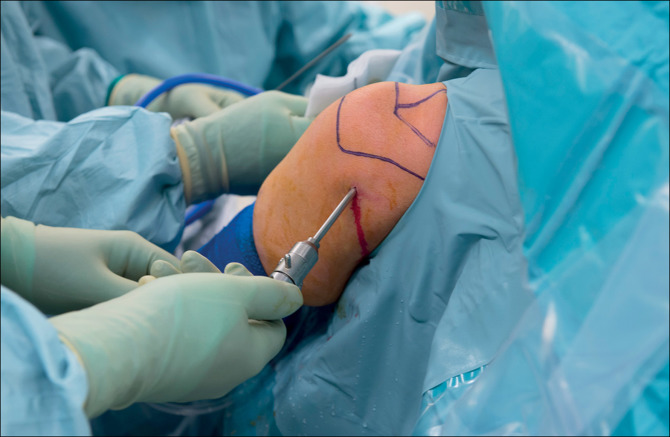There are many different reasons for leg length discrepancy, but there are essentially two main causes: being born with a condition that causes one leg to grow slower than the other or an incident that affects the length of the bone (fracture) or affects the growth center of the bone (trauma, infection, etc.). Your doctor should be able to help you determine the cause of your leg length discrepancy.
How Much Leg Length Discrepancy Is Okay?
This question is difficult to answer. Many people have a small difference in their leg lengths, however most people don’t notice the difference or require any treatment. When the difference measures more than 1.5 to 2.0 cm (5/8 of an inch), most physicians would recommend having it evaluated. Depending on your overall height, this amount of leg length discrepancy may be need to be treated.
How Can a Leg Length Discrepancy Affect Other Parts of the Body?
One concern is that walking with your pelvis out of alignment can start to cause low back pain, hip pain or knee pain over time. Someone with a leg length discrepancy can also appear to have curvature of the back, but it does not cause permanent spine deformity (scoliosis). In the standing position, the leg length discrepancy will cause tilting of the pelvis. The spine will try to compensate for this tilt by curving back in the opposite direction. This curvature is usually flexible and goes away in the sitting position.
It is possible to have both a leg length discrepancy and scoliosis at the same time but only as two independent diagnoses.
Are There Any Non-Surgical Treatments for Leg Length Discrepancy?
Leg length discrepancies can be managed without surgery by adding a lift to the shorter leg. In many cases, the lift can bring the discrepancy down to a comfortable level. Your doctor can help determine the size of the lift that best fits your needs.
If the lift is one centimeter (1/2 inch) or less, it can be placed inside the shoe. This type of lift can be switched from one shoe to another and is not visible. Lifts that are greater than one centimeter in size, are permanently attached underneath the shoe. Lifts can be used indefinitely as a means of managing a leg length discrepancy. Some patients, however, find it to be bothersome to continually have to worry about having a shoe lift with their shoes. The shoe lift treatment method also does not correct the discrepancy whenever you are not wearing shoes.

Besides Using a Lift in My Shoe, Are There Other Treatments for Leg Length Discrepancy?
There are surgical methods of treating leg length discrepancy. Each of these techniques produces a permanent correction of the leg lengths. Depending on your condition, you and your doctor may choose to shorten the long leg or lengthen the short leg
How Do You Shorten a Leg?
If you are still growing, one or two of the growth centers in the leg may be surgically closed. This allows the shorter leg to use its remaining growth to catch up. This is generally an outpatient surgery.
Another option is typically reserved for patients who have completed growth. In this technique, a small segment of bone is removed from the longer leg to correct the discrepancy. This usually requires an overnight stay in the hospital after surgery and takes about three months for the bone to heal.
Below are signs and symptoms that suggest you should see a joint specialist.
- Your joint pain has kept you from completing everyday activities: You should not have to sacrifice an activity you love because of an injury.
After establishing a diagnosis, your joint doctor will offer you multiple options for treatment.
For the specialists at Orthobridge Orthopedic Institute, that is one of our priorities: finding the best individual treatment plan and getting patients back to enjoying life without discomfort. - Your symptoms are getting worse over time: Patients typically wait a few days or weeks to see if their joints will improve on their own.
If you notice that your symptoms are not improving, increased stiffness, expanding swelling, and greater pain, make an appointment sooner to prevent serious injury.

How Do You Lengthen a Bone?
Bone is living tissue and can regenerate itself. This is best illustrated by thinking about a broken bone. Many times, when a patient presents to the doctor with a broken bone, a cast is placed on the injured arm or leg and over the next few weeks, the bone repairs itself and heals. The cast is removed and the patient can resume his or her daily activities.
This same healing response can be used to lengthen a bone. The surgeon can make a precise surgical break in the bone and then allow it to heal. Instead of having the bone heal in its original position, however, the bone is slowly pulled apart (approximately one millimeter per day). As the two bone ends gradually separate, the body fills in the gap with new bone. The new bone slowly heals over a few months and creates additional length in the previously shorter bone.












